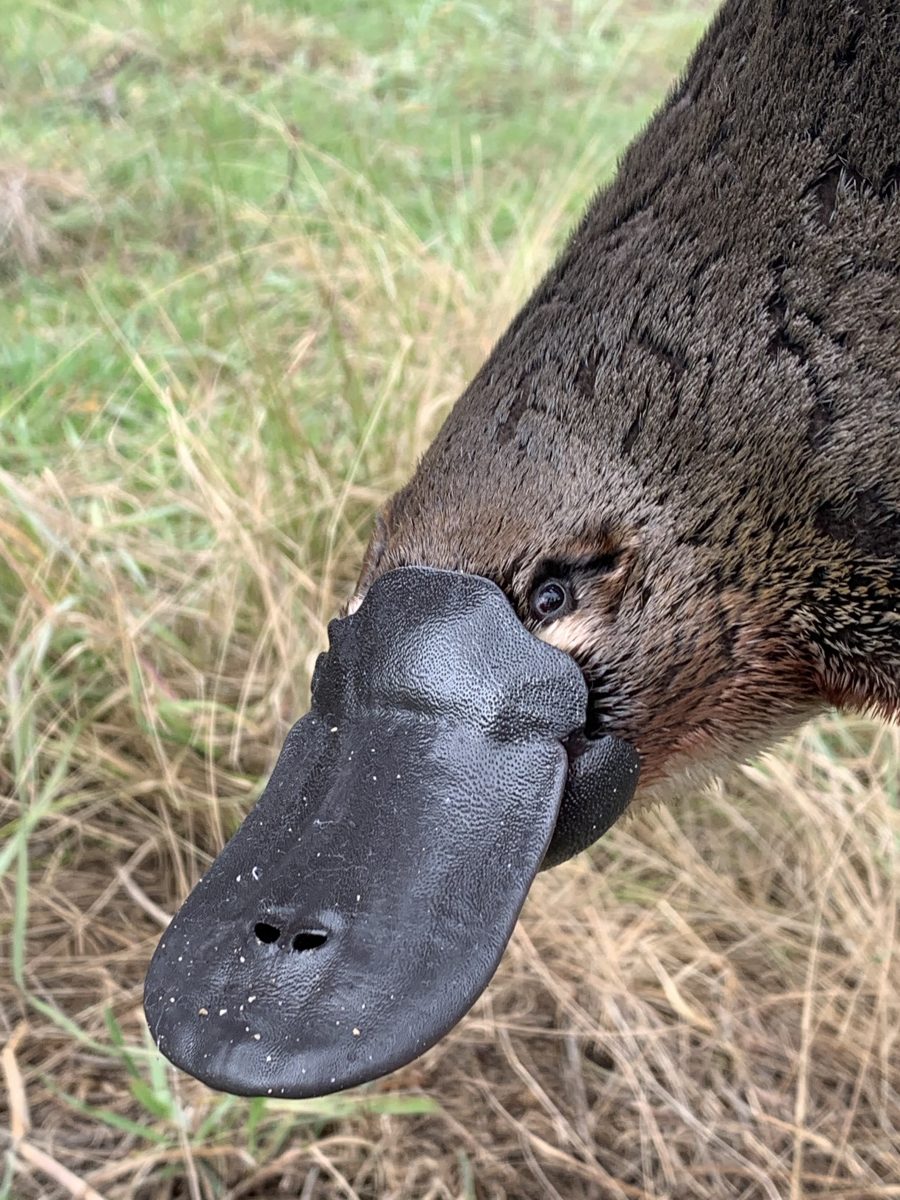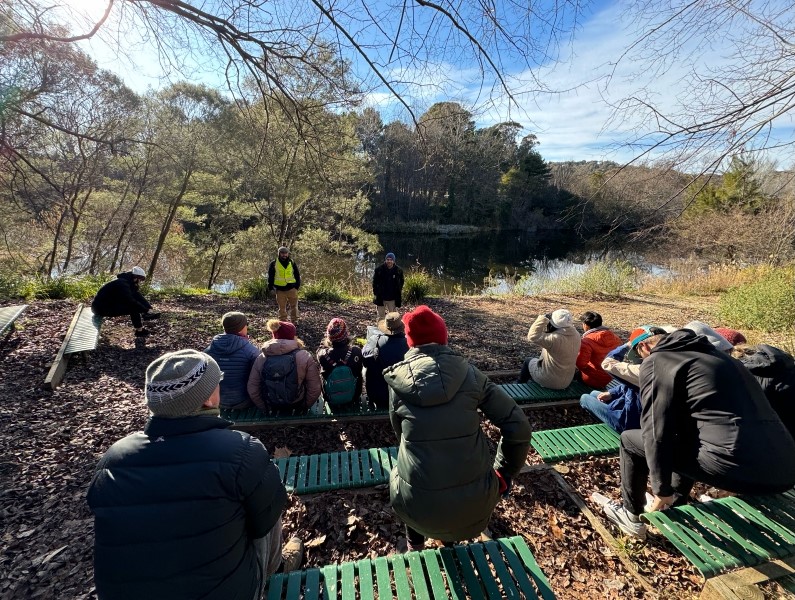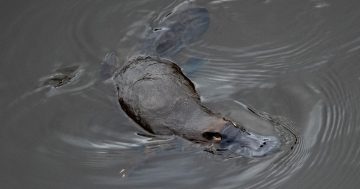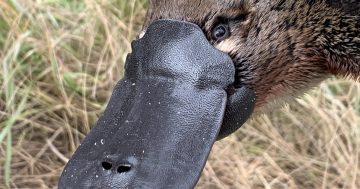
This adult platypus was found in the Lower Molonglo by one of the Waterwatch volunteers. Photo: Upper Murrumbidgee Waterwatch Program.
They might be the shy type and can camouflage themselves to near invisible, but if ever there was a time to get up close and personal with a platypus, it’s now.
August is known as platypus month in the ACT and surrounding NSW when the small amphibious mammals come up for air.
It’s also the time when Canberra’s citizen scientists are invited to don their big coats, warmest socks and waterproof shoes to join one of the 28 survey groups to help find, track and monitor the long-billed mammal to get a better understanding of its numbers in our rivers and creeks to help keep it off the endangered list.
According to the world body that tracks such animals, the International Union for Conservation of Nature, the status of the platypus was upgraded recently to “near threatened”.
Not only is the mammal itself in danger, the platypus, or Mulanggang in Ngunnawal language, knowing where it lives is also crucial – it always makes its home in healthy landscapes and waterways.
ACT Environment Minister Rebecca Vassarotti said late winter was the ideal time to spot the native animals.
“This is done through a number of surveys over August, as well as through members of the public sending in incidental sightings,” she said.
“There are over 300 spots available for the one-hour surveys, which will take place at dawn and dusk in the Upper Murrumbidgee area.
“In addition to the surveys that collect valuable data, ACT Waterwatch will be running four free walks on the Queanbeyan River and Lower Molonglo River for people to come together with family and friends to learn more about the platypus and see if they can try to spot any in the river.”
She said the surveys were a great opportunity for citizen scientists to learn how to spot a platypus while also helping researchers monitor local populations.
ACT Waterwatch Regional Facilitator Daniel Harris-Pascal said the August surveys were also about raising awareness of platypuses, with many people unaware they shared their environment with the iconic creatures.
“Many people don’t realise we have them living here,” Mr Harris-Pascal said. “Canberra has a transient population, so it’s important for people who move here to know that they may have them living in waterways nearby.
“We have created a portal which shows where they have been found inside and outside the ACT, including from Yass to Cooma and Queanbeyan, showing platypus and rakali [water rat] sightings.”
For a citizen science project, mostly done in late winter and usually involving water, the volunteers do remarkable work covering the whole Upper Murrumbidgee River and, all up, over 11,000 square kilometres.

Volunteers listen to Waterwatch regional facilitator Daniel Harris-Pascal at one of the platypus watch sites. Photo: Supplied.
One of the longest-running such projects in the country, Mr Harris-Pascal said the data recorded was crucial to inform decision-making when it came to protecting the mammals – and to ensure the bush capital remained just that.
What made a good citizen scientist when it came to platypus monitoring? Lots of patience, he said.
“At each site, we do two night and two morning surveys. At this time of year, we have seen them equally out day and night, mostly out foraging.
“The better the quality of water, the better it is for them. We tend to think they live mainly in the pristine rivers of the back country, but provided creeks and rivers have natural banks and flows, they can live in that environment too.
“Their main threats are when the banks are eroded by stock, pollution, sediment – that all can affect the water bugs they need to feed on. They can eat a third of their body weight in those bugs – it’s like a 60 kg person eating 20 pizzas.”
He said that with the breeding season about to start, platypuses were at their most active point now, with volunteers reporting a flurry of sightings.
To become involved in the citizen science project, check out the Waterwatch website to see where platypuses have been found or report a sighting on the Platty and Ratty Portal.














